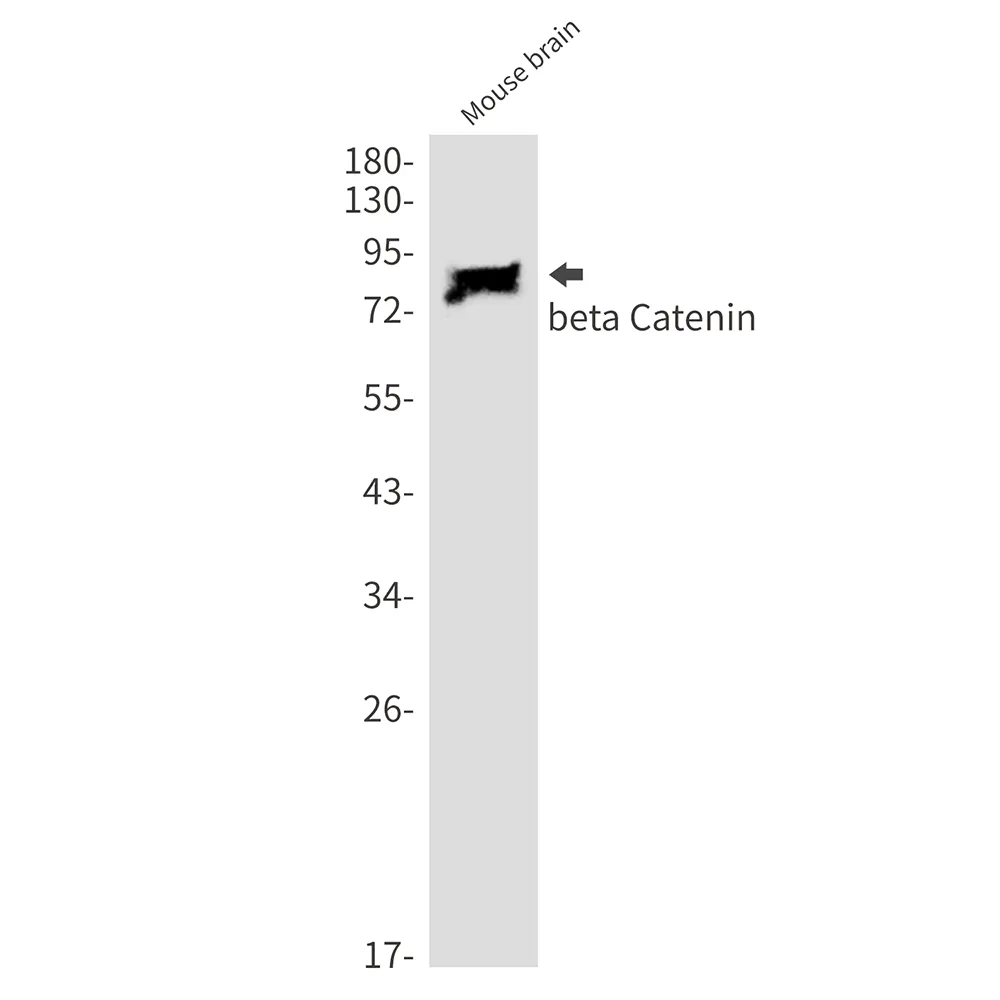


Size:100μL Price:288 $180
Application:WB,IHC,IP
Reactivity:Human,Mouse,Rat,Hamster
Conjugate:Unconjugated
Optional conjugates: Biotin, FITC (free of charge). See other 26 conjugates.
Gene Name:CTNNB1
Summary
| Production Name | beta Catenin Rabbit Monoclonal Antibody |
| Description | Recombinant rabbit monoclonal antibody |
| Host | Rabbit |
| Application | WB,IHC,IP |
| Reactivity | Human,Mouse,Rat,Hamster |
Performance
| Conjugation | Unconjugated |
| Modification | Unmodified |
| Isotype | IgG |
| Clonality | Monoclonal |
| Form | Liquid |
| Storage | Store at 4°C short term. Aliquot and store at -20°C long term. Avoid freeze/thaw cycles. |
| Buffer | 50mM Tris-Glycine(pH 7.4), 0.15M NaCl, 40% Glycerol, 0.01% Sodium azide and 0.05% protective protein |
| Purification | Affinity Purification |
Immunogen
| Gene Name | CTNNB1 |
| Alternative Names | CTNNB1; CTNNB; OK/SW-cl.35; Catenin beta-1; Beta-catenin |
| Gene ID | 1499 |
| SwissProt ID | P35222 |
Application
| Dilution Ratio | WB 1:500-1:1000,IHC 1:50-1:100,IP 1:20-1:50 |
| Molecular Weight | Calculated MW: 85 kDa; Observed MW: 85 kDa |
Background
Beta-catenin is an adherens junction protein. Adherens junctions (AJs; also called the zonula adherens) are critical for the establishment and maintenance of epithelial layers, such as those lining organ surfaces. AJs mediate adhesion between cells, communicate a signal that neighboring cells are present, and anchor the actin cytoskeleton. In serving these roles, AJs regulate normal cell growth and behavior.
Research Area
Signal Transduction
